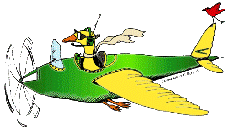Bird Strike Committee Proceedings
Date of this Version
October 2002
Document Type
Article
Abstract
North American Canada goose (Branta canadensis) populations continue to increase, causing potentially greater hazard to aviation. There is greater interest by biologist and aviation interests in monitoring the status of these populations because of the increasing number of Canada goose strikes to aircraft. Waterfowl in North America are managed in four administrative flyways – the Atlantic, Mississippi, Central, and Pacific. Goose numbers in these flyways are based on mid-winter or breeding period counts. The Canada goose count for North America in 2000 was 5,728,000—61% were the large resident geese. The resident component of the population has increased more than 3-fold from 1990-2000. Reported Canada goose strikes on aircraft have increased during recent years. For the years 1990-2001, Canada geese were identified in 61% of all goose strikes (606 of 985) reported to the FAA. Also, during the same reporting period, geese caused engine damage in 139 of the 985 strikes. Canada geese damaged 61% of the engines (85 of 139). The numbers of operating commercial jet aircraft and scheduled departures by airlines increase yearly. The higher number of Canada goose strikes probably is due to a greater awareness of the hazard and better reporting of strikes, and to the exposure of more commercial aircraft to increasing Canada goose populations. Aggressive integrated Canada goose management programs should continue or be undertaken to reduce this hazard.


